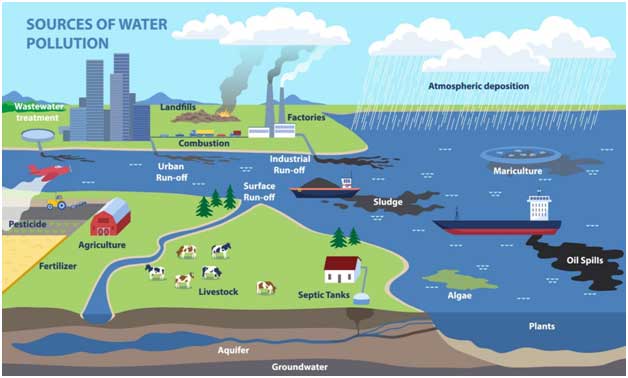The Kelantan Plain farmers rely on shallow groundwater for their domestic and agricultural water supply, and they mainly grow tobacco and rice. However, the use of high levels of fertilizers in these crops could potentially contaminate the groundwater. To assess this, a broad-scale survey was conducted to measure inorganic fertilizer inputs, land use, soil type, and agronomic practices. Thirty sites were sampled in the sandy tobacco area, and 30 sites were sampled in irrigated rice areas. Water samples were collected monthly from field piezometers and household open wells at each site in both agro-systems. Additionally, a more detailed study was conducted on 16 piezometers installed on a grid pattern to identify the factors and processes that influence the levels of pollutants in the groundwater.
The survey showed that the level of NH4-N in the groundwater was high (about 1 mg/L) in June 1992 in the tobacco agro-system. Nitrate levels increased during fertilizer application (March and April), and they increased again from August until October with corresponding decreases in NH4 levels. Water table depth and redox potential influenced the fluctuation of nitrate levels in the groundwater at several grid points, cones, and ponded wells. In the rice agro-system, the average levels of NH4 in the piezometers and drinking wells were generally below the permissible limit except in July 1992, which indicates a direct influence of fertilization on the groundwater. The specific site study indicated that the water table strongly influenced the redox potentials, which in turn controlled the levels of ammonium, nitrate, phosphate, and potassium.
Agriculture and influence groundwater pollution issues.
Agricultural-related issues can be tackled by adopting sustainable farming practices, promoting soil and water conservation measures, implementing precision agriculture techniques, and enforcing regulations to minimize pollution from agricultural activities. Additionally, educating farmers and stakeholders about the significance of protecting groundwater is vital. To mitigate groundwater pollution caused by agriculture, implementing monitoring programs to assess water quality is also crucial.
Irrigation Practices:
Inefficient irrigation practices can contribute to groundwater pollution. Excessive water application can cause leaching of fertilizers and pesticides from the root zone into groundwater. Using contaminated water sources for irrigation can introduce pollutants directly into the soil, increasing the risk of groundwater contamination.
Soil Erosion and Sedimentation:
Poor land management practices like overgrazing and deforestation can cause soil erosion, leading to sedimentation in water bodies and groundwater pollution due to attached pollutants like nutrients, pesticides, and heavy metals.
Land Use Change and Urbanization:
Urban sprawl, the conversion of agricultural land to urban and suburban uses, can cause groundwater pollution. It increases impervious surfaces, reducing infiltration and increasing surface runoff, which carries pollutants like oil, chemicals, and litter into groundwater through stormwater runoff, affecting water quality.
Excessive Use of Fertilizers and Pesticides:
Farmers use fertilizers and pesticides to improve crop yields and control pests. However, excess use of these chemicals can lead to groundwater contamination, which could pose risks to human health and ecosystems.
Animal Manure and Waste Management:
Improper management of animal waste can contaminate groundwater with pathogens, nutrients, and organic matter, particularly in areas with high livestock densities.
 Agriculture and influence groundwater pollution issues solutions.
Agriculture and influence groundwater pollution issues solutions.Precision Farming Techniques:
One way to improve farming practices is to use precision farming techniques, including variable-rate applications of fertilizers and pesticides. GPS-guided equipment and remote sensing technologies can be used to efficiently apply inputs, reducing the risk of excess use and leaching into groundwater.
Enhanced Animal Waste Management:
Implementing proper management strategies for animal waste, such as composting, anaerobic digestion, and nutrient management planning, can minimize nutrient runoff and leaching into groundwater when applied as organic fertilizer.
Buffer Zones and Riparian Vegetation:
Establish vegetative buffers and riparian vegetation along water bodies and sensitive areas to trap sediments, nutrients, and contaminants, protecting water quality from agricultural runoff that enters groundwater.
Improved Nutrient Management:
Develop and implement nutrient management plans using soil testing and crop requirements to optimize fertilizer application rates, timing, and placement. This approach reduces nutrient runoff and leaching, decreasing the transport of nitrogen and phosphorus into groundwater.
Conservation Agriculture Practices:
Adopt conservation agriculture practices, such as cover cropping, reduced tillage, and contour farming, to preserve soil health, prevent erosion and enhance water infiltration. These practices aid in controlling sediment and reducing groundwater contamination while also maintaining soil fertility.




